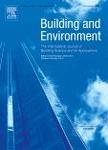版权所有:内蒙古大学图书馆 技术提供:维普资讯• 智图
内蒙古自治区呼和浩特市赛罕区大学西街235号 邮编: 010021

作者机构:Harbin Inst Technol Sch Architecture & Design Harbin 150090 Peoples R China Minist Ind & Informat Technol Key Lab Cold Reg Urban & Rural Human Settlement En Harbin 150090 Peoples R China Guangdong Univ Technol Sch Civil & Transportat Engn Guangzhou 510006 Peoples R China
出 版 物:《BUILDING AND ENVIRONMENT》 (Build. Environ.)
年 卷 期:2025年第270卷
核心收录:
学科分类:0830[工学-环境科学与工程(可授工学、理学、农学学位)] 08[工学] 0813[工学-建筑学] 0814[工学-土木工程]
基 金:National Natural Science Founda-tion of China
主 题:Deep learning Three-dimensional flow field Fast prediction Non-intrusive reduced-order model Convolutional autoencoder
摘 要:The prediction of flow fields is crucial in both scientific research and engineering, yet traditional Computational Fluid Dynamics (CFD) calculations demand substantial computational resources and time. Recently, deep learning has gained attention in fluid simulation for its suitability in nonlinear problems, but its application in practical three-dimensional building simulations remains limited. This study proposes a deep learning framework based on a non-intrusive reduced-order model for rapid predictions of 3D multi-physical fields. The framework involves three key steps: (1) using a convolutional autoencoder to extract low-dimensional features from similar flow fields;(2) incorporating geometric parameters and boundary conditions of the target flow field, computing a Hadamard product with extracted features;and (3) reconstructing the predicted flow field through an up- sampling network. Two model scenarios (case-3v and case-6v) with varying boundary conditions were validated using actual residential environments. Comparisons with CFD simulations and on-site measurements showed that the model could predict wind speed, temperature, and other parameters in under 5 seconds, with accuracy comparable to zero-equation models. This approach offers a rapid and efficient solution for indoor flow prediction in ventilation research and early engineering design.